Dapol BL-001-010 Black Label Class A4 Seagull LNER Garter Blue Unvalanced 4-6-2 No.33 Steam Locomotive - DCC Sound & Smoke

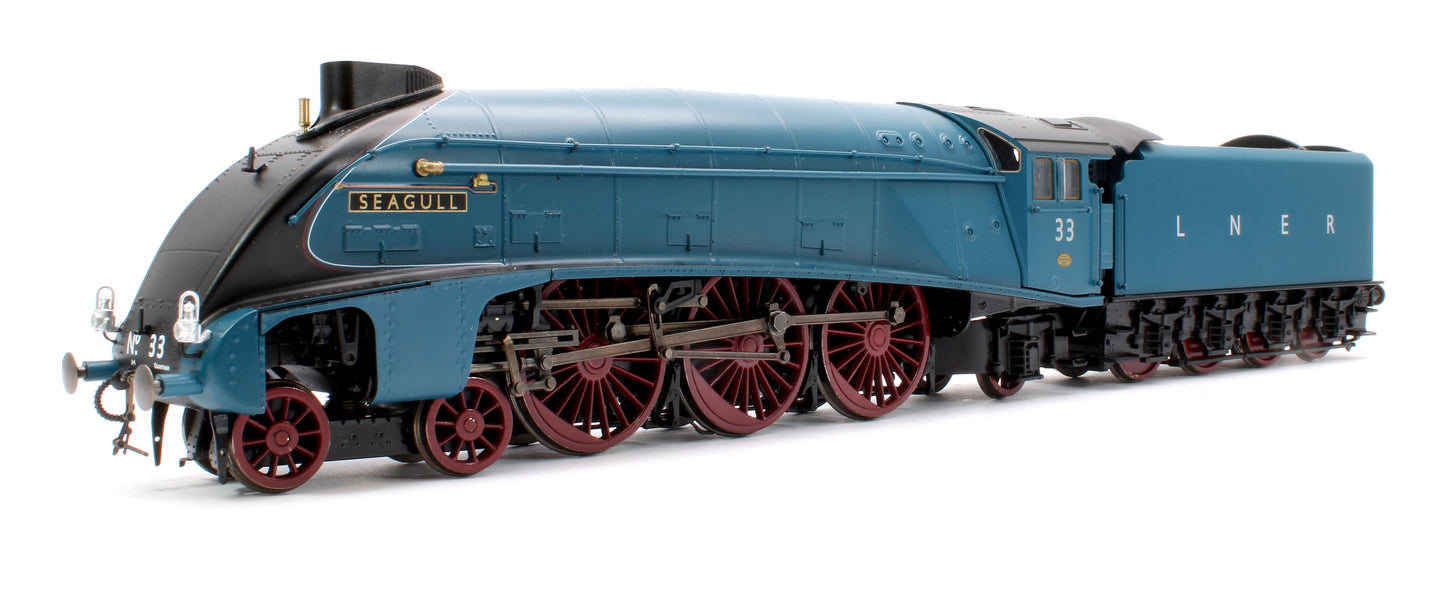
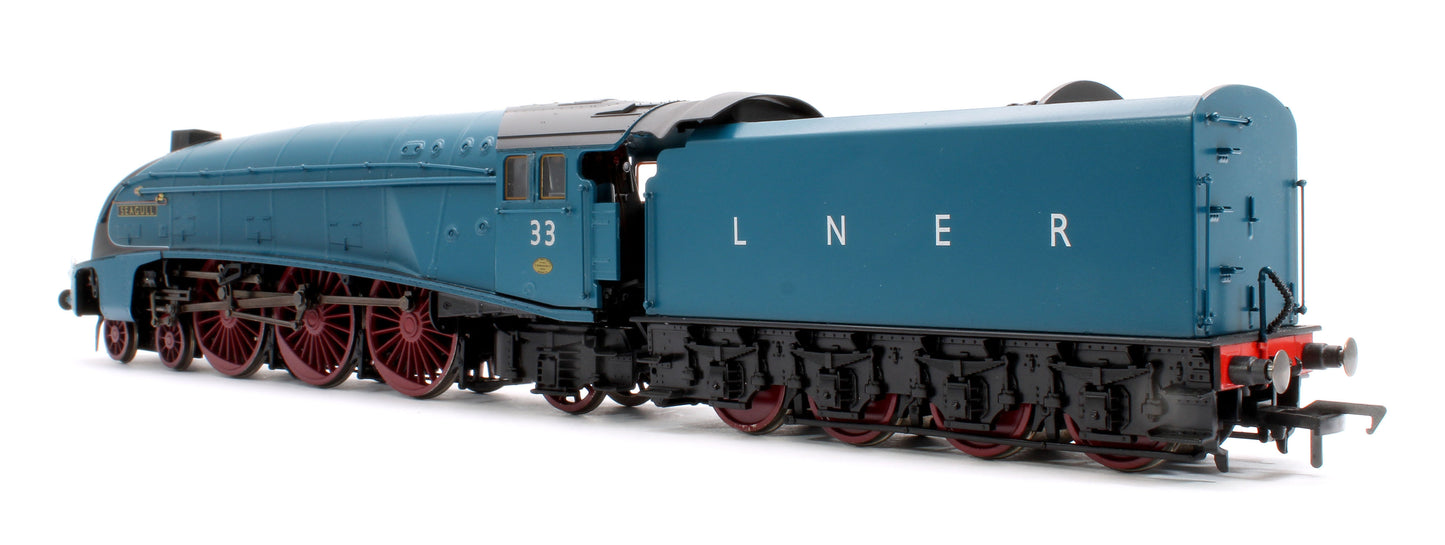

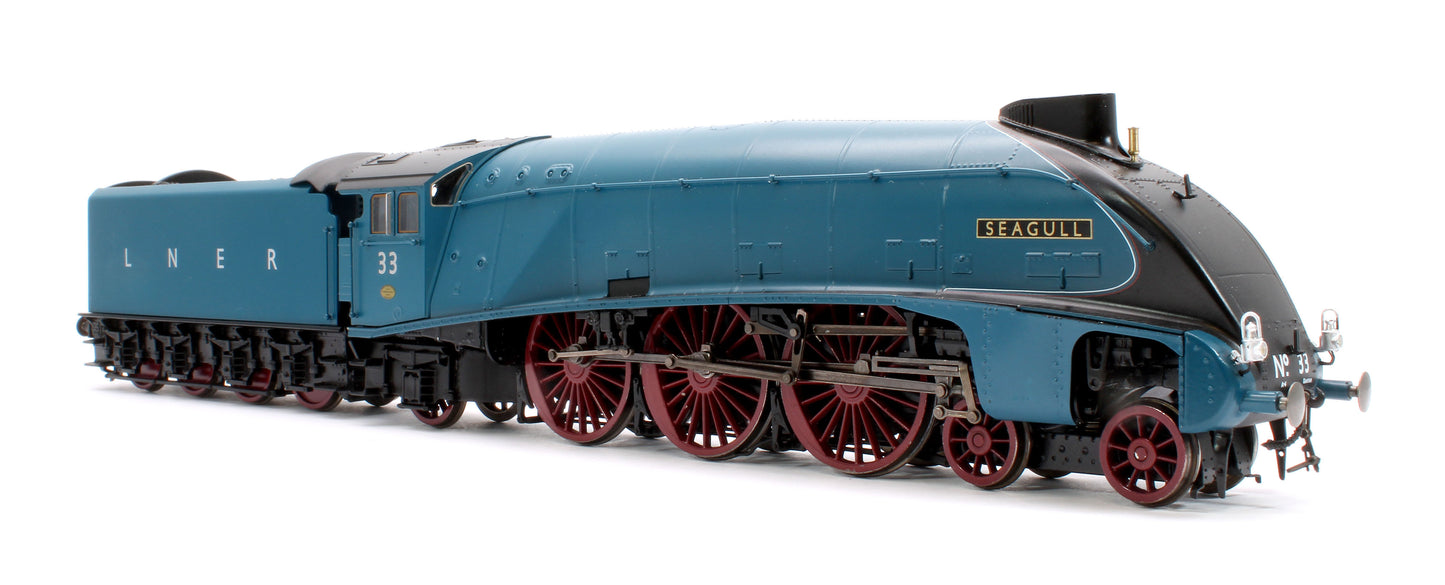

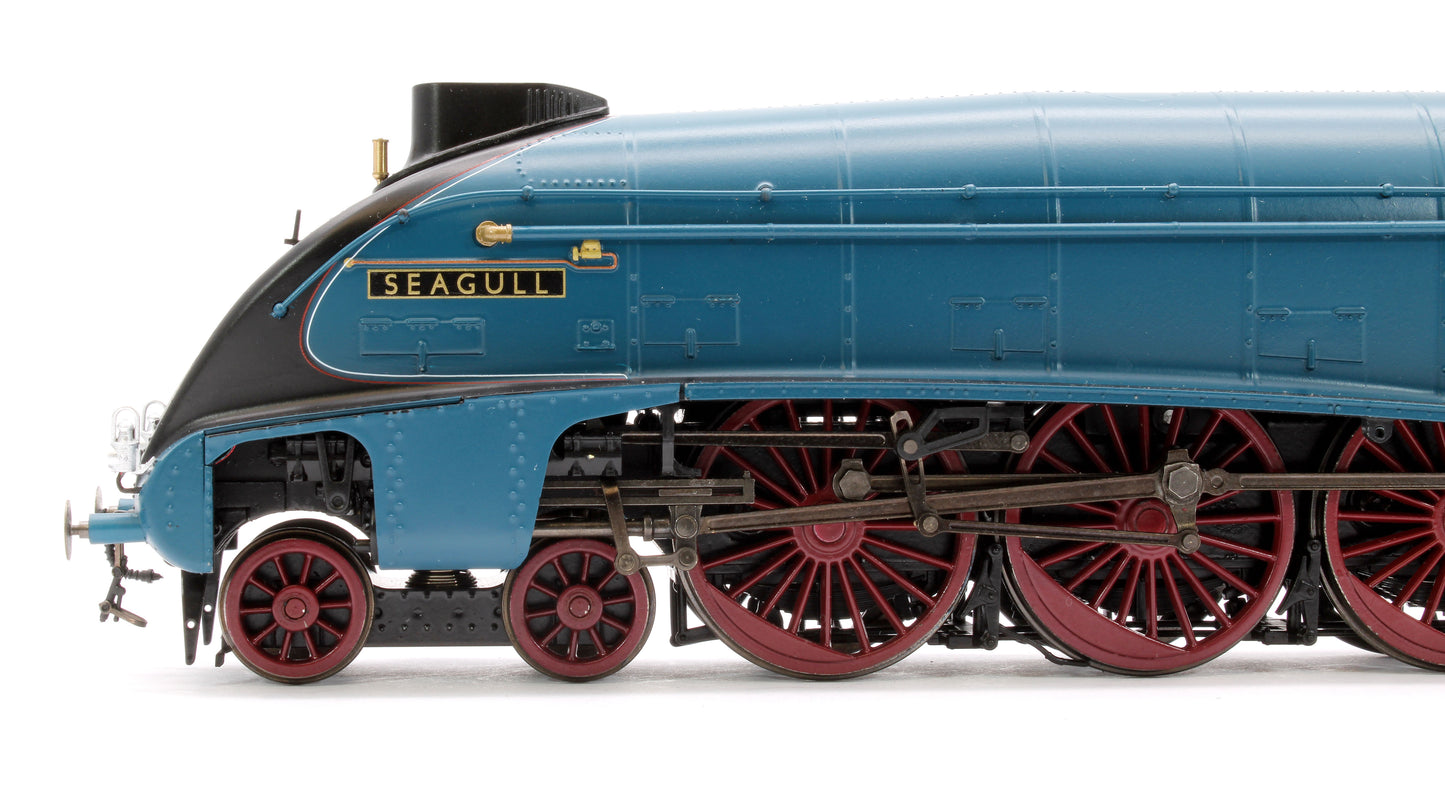

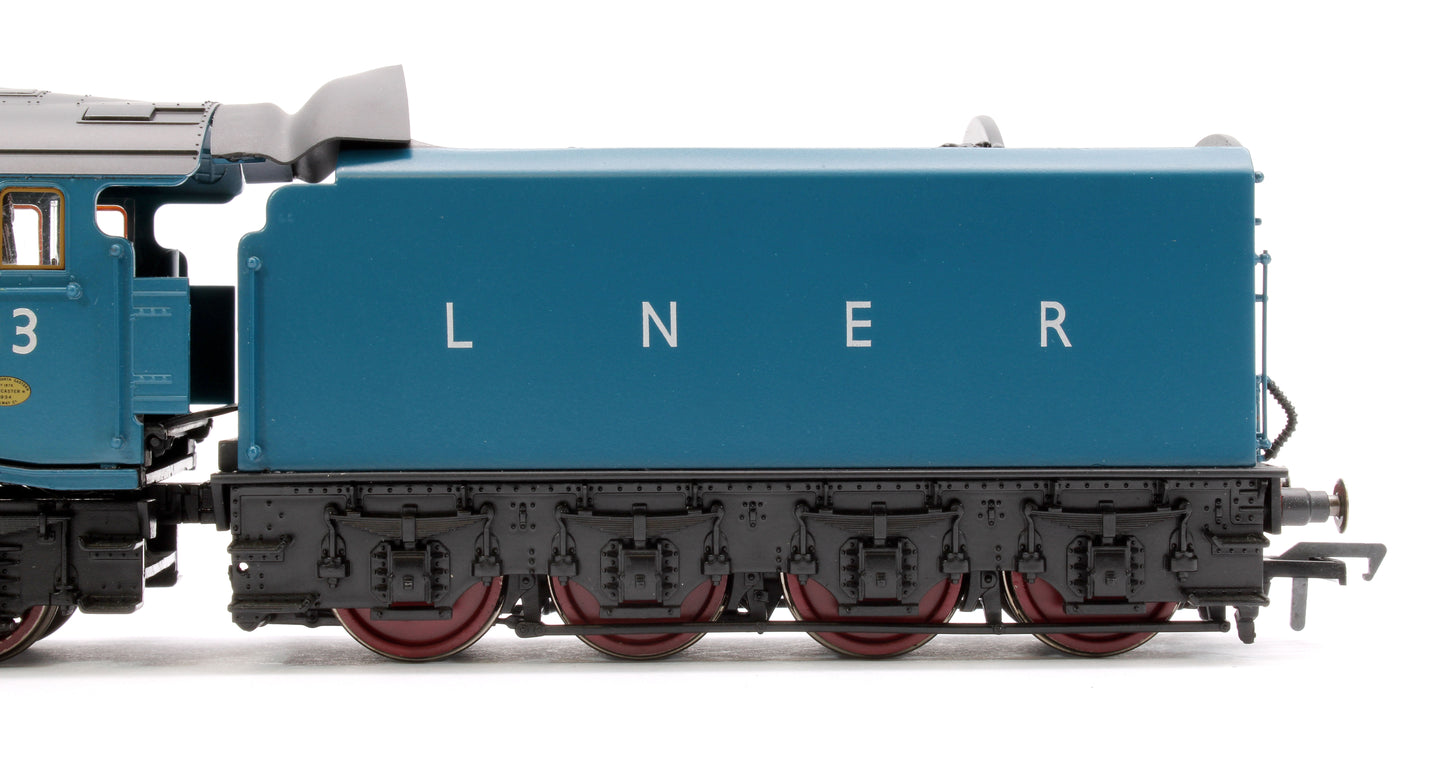
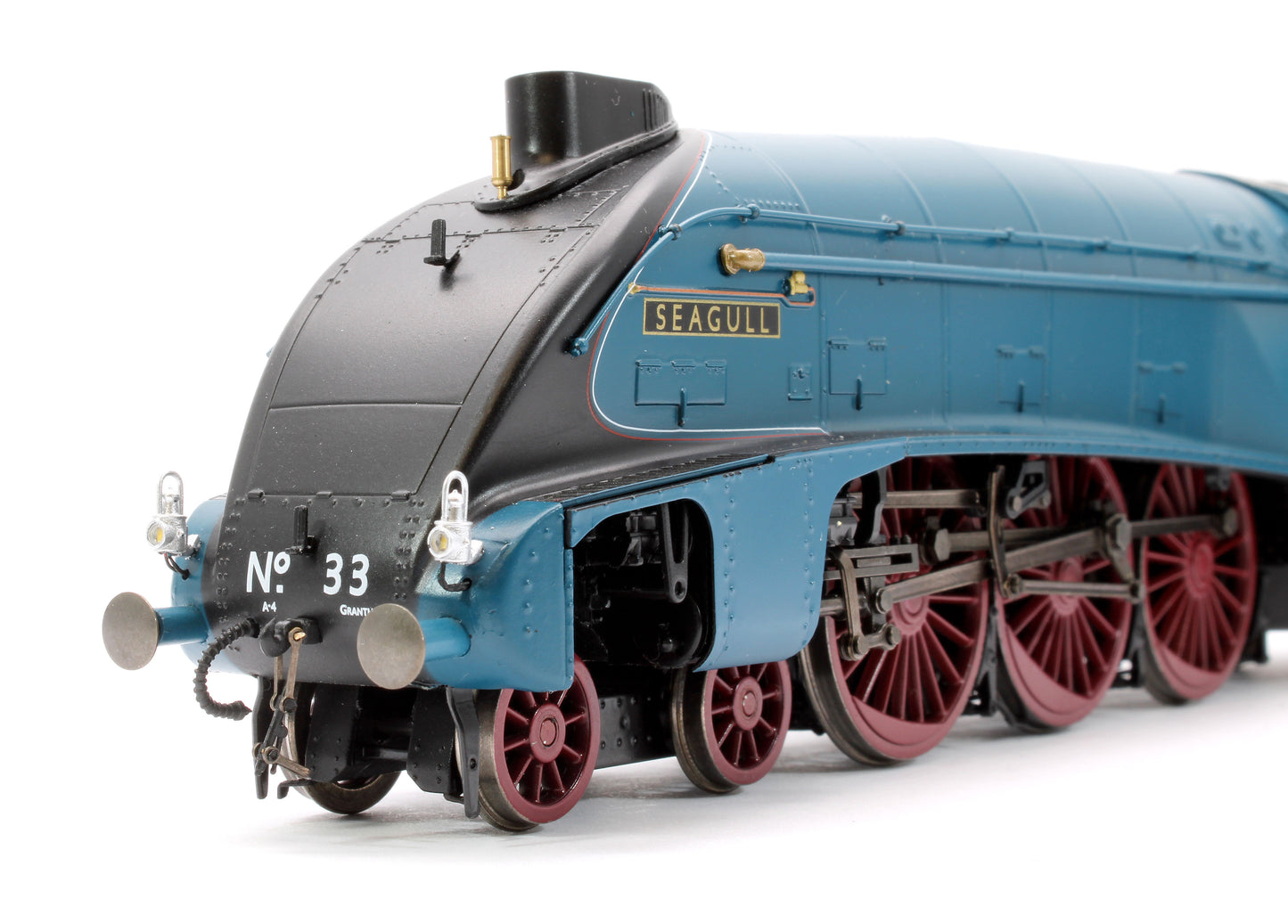

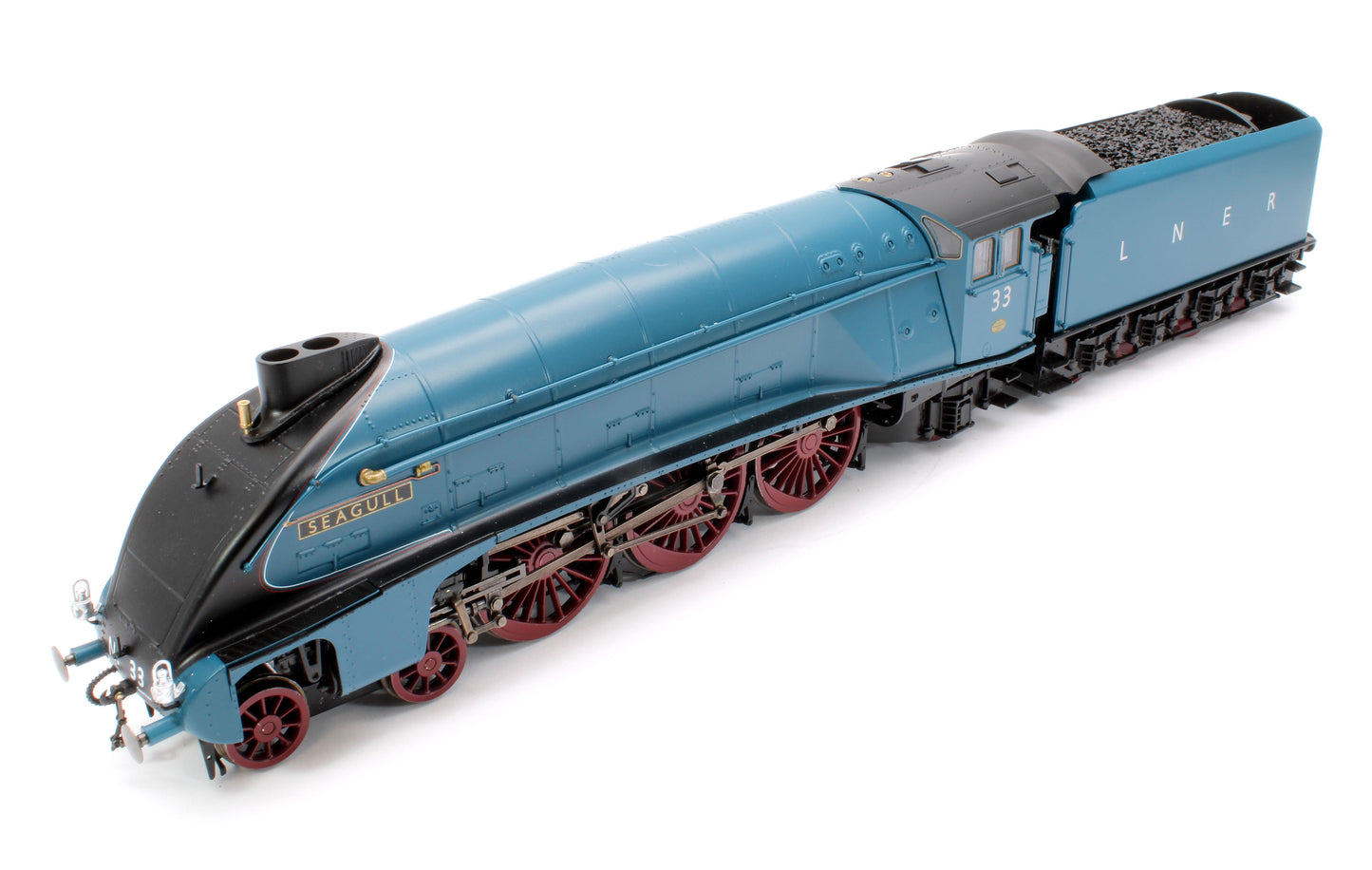
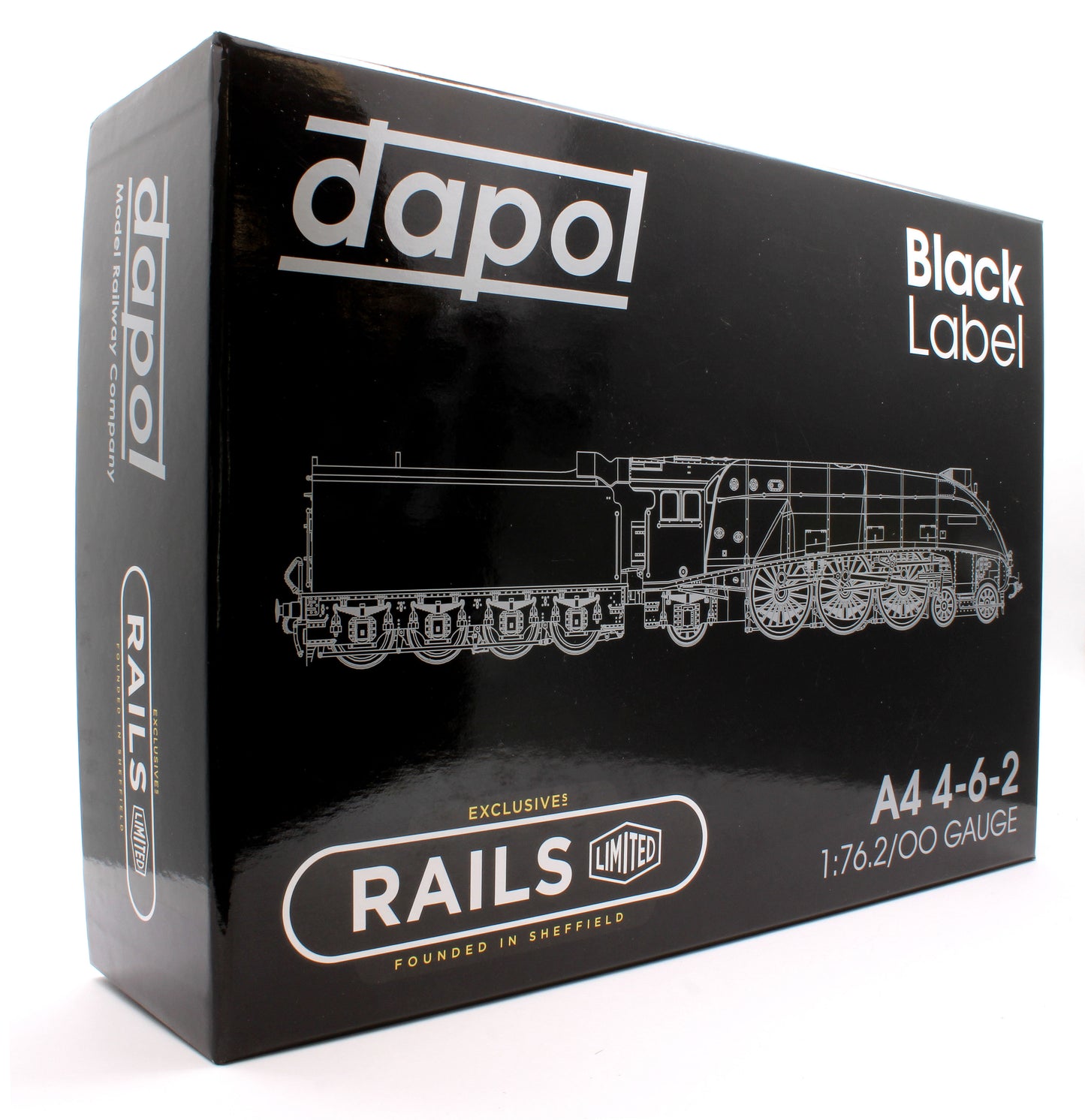
Product Details
| SKU | DAP-BL-001-010 |
|---|---|
| Vendor | Dapol |
| Categories | Best selling products Class A4 Locomotives Dapol Dapol Black Label A4s DCC Sound Fitted Era 3 Era 4 Exclusive to Rails HO-OO In stock Items Latest Releases Locomotives New products OO Gauge Latest Releases OO Gauge Locomotives OO Gauge scale OO Gauge Steam Locomotives Steam Locomotives |
| Scale | OO Gauge |
| Share | |
| Features |
|
Product Description
Exclusive to Rails of Sheffield
- All Diecast Model
- Dapol’s Innovative Loco to tender easy coupling
- NEM Coupling pockets
- Powerful and Smooth 5 Pole skew wound motor with flywheel
- Highly detailed Body, Tender and cab interior
- Loco driving wheels and tender wheels pick up
- Exquisite livery application
- Zimo 21-pin decoder
Electronic Features
- Working front lamps
- Dynamic firebox flicker effect
- Hi-fidelity sound project recorded from Bittern
- Chuff sounds also operate in DC mode
- User-configurable RealDrive with working brake for prototypical driving experience.
- Twin Speakers (tender and Locomotive)
- Smoke generator controlled via decoder
Details Features
- Valanced and unvalanced bodies
- Three tender variations
- Single and double chimneys
Following on from the success of the A3, and at the insistance of the LNER publicity Department, Nigel Gresley revealed his next class of high speed express engine in 1935. They were introduced, like the A3's, for the long distance, high speed, runs on the ECML to which they settled in very quickly.
They were an almost instant success, building on the foundations laid by the A1 and A3 classes with the added streamlining both of the outer casing of the engine and a lot of internal components. In 1938 Class A4 4468 'Mallard' set the world steam speed record of 126.4 mph on Stoke Bank south of Grantham while running on a trial service with a dynamometer car (for recording speed etc) and 6 standard coaches.
During the war years it was found that the valances covering the main running gear was hampering quick maintenance that on other classes would be relatively easy. The decision was taken to remove the valances completely to aid general servicing with the intention of restoring them at the end of hostilities, however this never happened and for the rest of their lives they ran without them.
The only other major change to the look of the locos came with the fitting of double chimneys, although with the abundant streamlining this was less obvious than on other classes. The A4 locomotives started to be withdrawn in 1962 with the final members lasting until 1966. Luckily 6 have been preserved, including Mallard and 3 others in the UK, 1 in the USA and 1 in Canada.












